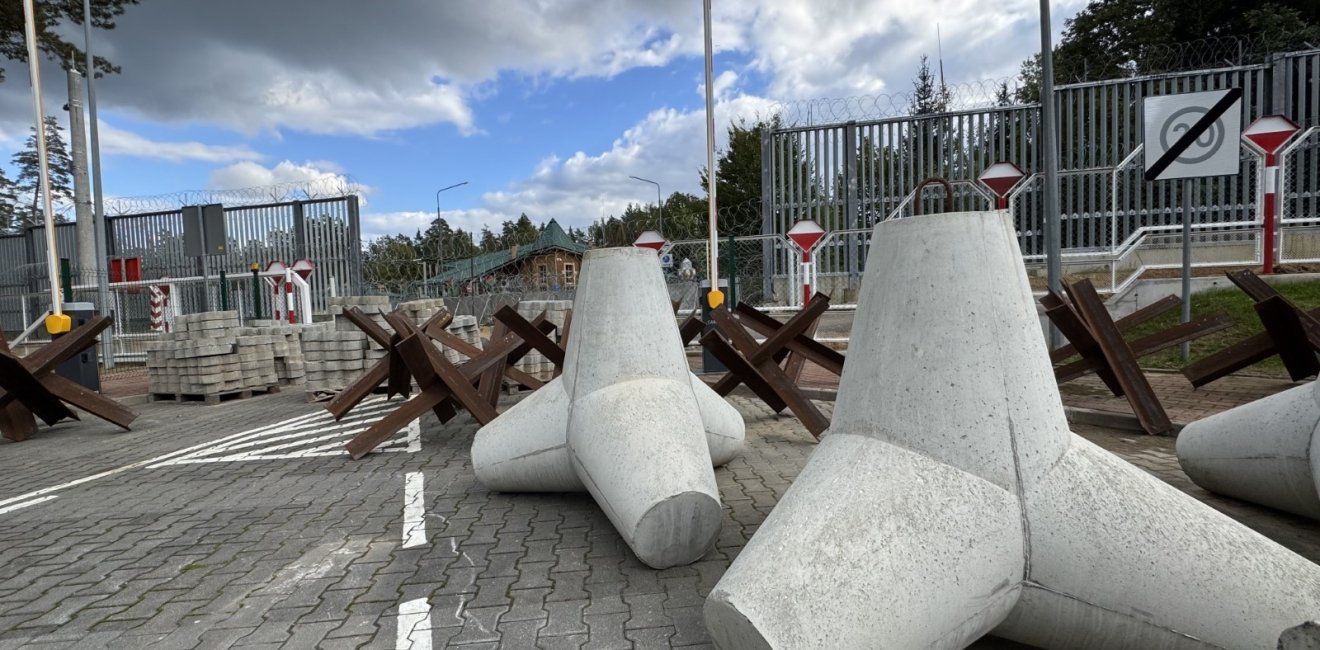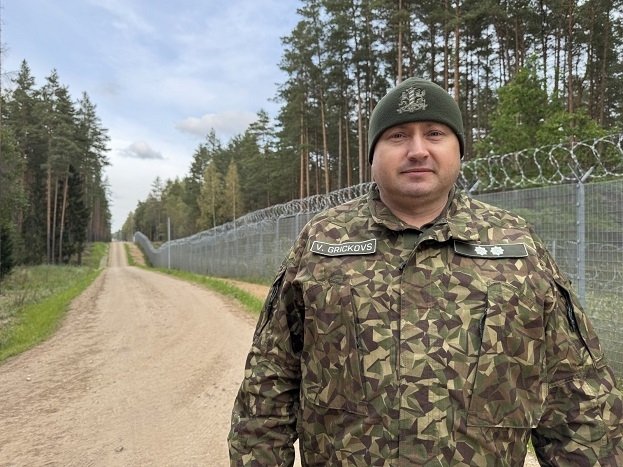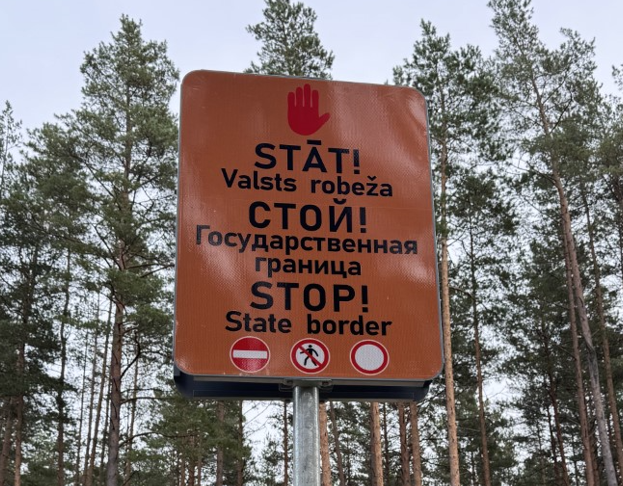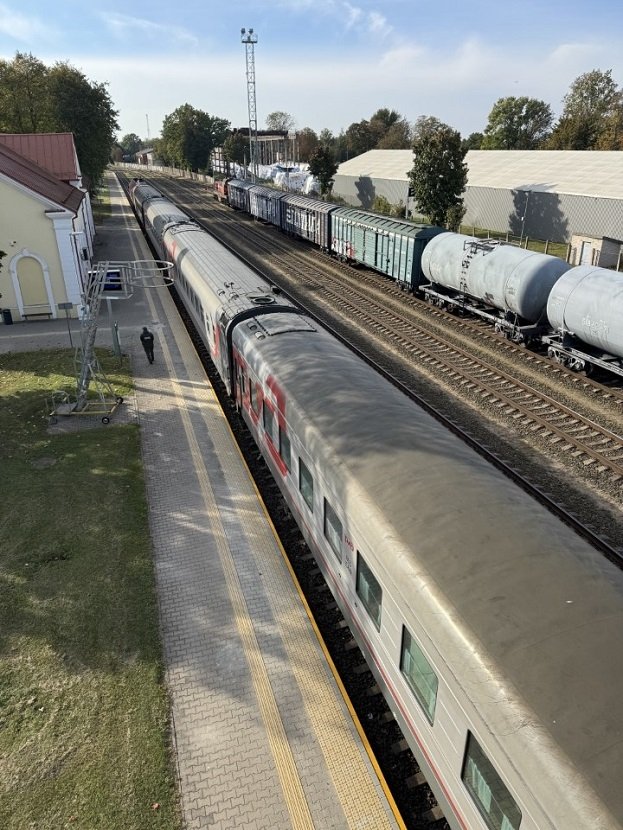On the Border of War

Since time immemorial, the Bialowieza (Białowieża) Forest has stood in its primeval glory, one of the last such forests that used to blanket all of Europe. Covering border areas in both Poland and Belarus, it welcomed hikers and, later, tourists drawn to its dense green pine-scented woods.
The forest is famous for another reason: here, on December 8, 1991 the leaders of Russia, Ukraine, and Belarus – Boris Yeltsin, Leonid Kravchuk, and Stanislav Shushkevich – met in a hunting lodge in Belarus and formally dissolved the USSR.
Even after that, people crossed the border relatively freely. Today, however, the Bialowieza border between Poland and Belarus is closed. Concerned about its national security, Poland gave the order in 2023. Today, a new 6-meter-high reinforced steel barrier erected by Poland slices through the middle of the forest. Surveillance cameras scan the area. Armed border guards patrol the wide path next to the fence. The entryway where hikers used to walk over the border into Belarus is barricaded with x-shaped anti-tank obstacles made of rusted red steel, called “Czech hedgehogs.”
The entire length of Poland’s 418-kilometer (260 mile) border with Belarus, an ally of Russia, is being transformed. Of the country’s 13 border crossings with Belarus, only two now are open. The main threat, Polish officials tell me, is migration, weaponized both by Belarus and by Russia. Almost all the migrants are young men from Afghanistan, Pakistan, Iraq, and from African countries like Somalia and Eritrea, who are seeking employment and a better life in Europe, especially in Germany, where migrants can receive subsistence support. They learn about these illegal journeys online, through apps like Telegram. The traffickers are international organized crime groups who demand a steep price: from $3,000 to $16,000 per person, according to Polish authorities.
Migrants, they explain, are given Russian visas in their home countries (Russia is very active in Africa.) They are flown to Moscow, then to Minsk, and finally are transported to the borders of Poland and the Baltic countries. It’s a well-organized and coordinated process. Many of the migrants are unaware they are being exploited and used as weapons to undermine western countries.
At the border, the smugglers – often disguised as migrants – use sophisticated tools, including petrol saws, to cut through the steel. They sometimes incite the migrants to violence, urging them to throw rocks and other projectiles, even an occasional Molotov cocktail, at Polish border guards. The migrants move quickly. As one scrambles to the top of the fence, protecting his hands with some sort of material, others quickly thrust a tall ladder through the fence. The traffickers, meanwhile, cut a hole through the fence and several migrants scramble through. They raise the ladder against a second fence several meters away. If they can get to the other side, they will be in a deep forest where it’s harder for border guards to capture them. The guards say they catch about 95% of the migrants, but those who get away are soon on their way to western Europe.
To interdict the migrants, Polish border guards use a full kit of technical equipment: aircraft, helicopters, drones, observation towers, hand-held thermal imaging cameras, night-vision goggles and off-road vehicles.
That costs millions of dollars and that expense, Border Guard officials say, is part of Moscow and Minsk’s strategy: force Poland, a member of NATO and the European Union, to pay the price for their enemies’ hybrid attack.
The wave of weaponized migration has exploded in just the past four years. In 2018, for example, Polish authorities say there were only three attempts to illegally cross the Belarus border. In 2021, that number spiked to 37,833. In 2025 alone, so far, there have been 25,597 attempts. One reason for the wave of attempts, they say, was the 2020 Belarus presidential election, officially won – again - by Alexander Lukashenko, who has been in power since 1994. Most western countries declared the elections neither free nor fair. Lukashenko, they say, decided to retaliate and Vladimir Putin was more than happy to help.
Along the western border of Russia and Belarus, other European countries are following in Poland’s footsteps.
In south-east Latvia, near the town of Daugavpils, Lieutenant Colonel Vadims Grickovs, head of the Border Control and Immigration Service in the city, drives me down a bumpy dirt road deep into a wooded area that opens to a clearing where a tall metal fence has just been erected along Lativa’s border with Belarus. The top is crowned with coils of concertina wire. Anther band of wire snakes across the middle of the steel mesh. It’s not enough; smugglers already have cut their way through in a few spots.

Just a few years ago, the biggest threat here was cigarette smuggling. Now, as in Poland, it is weaponized migration. In 2021, Lt. Col. Grickovs says, Latvia was caught by surprise and struggled to create a plan to protect the border. “Now,” he says, “it’s routine.”
Just a few years ago, there was nothing here except fir trees. “Yes, it was just forest and border guards were patrolling without any fence,” he says. “It was possible to cross the border in any place. Now, we have this fence which stops migrants – not 100% –- but they need some additional time to cross the border, and it gives us time to react.”
The borderland here is dotted with lakes and swamps, so guards patrol it by boats, by skimobiles, by car and off-road buggies. They also use drones, and ground-based detection systems to monitor the area. The Latvian border guards get assistance from the country’s neighbors, including Lithuania, Estonia and Finland. It’s part of the Baltic Defense Line, a joint project by Estonia, Latvia and Lithuania announced in January 2024. The purpose: to stop, or at least slow, any invasion or incursion from Russia or Belarus.
Here in Latvia, however, the militarized border is taking a toll on the local economy. People who live in the area and have small businesses, especially tourism, say if this is a “war,” why should they invest more money?

All three Baltic countries used to be republics of the Soviet Union. Now independent states, they are staunch members of NATO and highly attuned the threat from Russia. And yet, many of their citizens have ties with Russia and with Belarus. Some have relatives, some were born there. Many still are disoriented by the 1991 collapse of the USSR which left relatives and friends on different sides of the border.
I set out west from Vilnius, the Lithuanian capital, to the village of Kybartai, on the border with the Russian enclave of Kaliningrad, the most militarized place in Europe. This morning the Vilnius airport is temporarily closed, due to the sighting of hot air balloons probably used, officials say, for sneaking contraband over the border.
And there are other, more serious threats. In late September, Russian MIG-31 fighter jets violated the airspace of Estonia. Earlier that month, Russian drones pierced the Polish border with Ukraine.
In a roadside café in Kybartai, I chat with a woman well into her 80’s who tells me she doesn’t fear the Russians. “They used to be our friends,” she says, “but now,” she says with disdain, “it’s Putin and that other one with the long face.” I reply, “Lavrov, the Foreign Minister?” “Yes!” she scoffs.
We speak in Russian, as I often have to do along the border; yet more proof that physical borders don’t always erase cultural or linguistic ties. Language now is a weapon of war. The woman’s native language is Lithuanian and everyone in the café speaks Lithuanian. She knows Russian because she grew up in the Soviet Union, but she whispers to me: “I try not to speak Russian. People don’t like it.”
Lieutenant Arunas Subacius of the State Border Guard Service leads me around the border crossing at Kybartai. Here, on the border with Kaliningrad, east still meets west. Cars, just a few of them, move through checkpoints where Lithuanian border guard officers inspect them, opening the trunk, peering in windows.

In another area, large transport trucks line up for inspection. They’re headed for Kaliningrad, bringing supplies for the enclave. Nearby, freight trains carrying furniture and other goods wrapped in plastic wait for inspection. The Lieutenant guides me up a steep flight of stairs over the tracks and I peer down on the one passenger train per day from Moscow allowed to transit through Lithuania to Kaliningrad. It’s a long journey, with stops of one or two hours for inspections. In Kybartai, passengers are not allowed to exit the train. Lt. Subacius tells me that, in the summer, with the train stopped for more than an hour, there is no air conditioning aboard and the people swelter.
During the Cold War, the Iron Curtain divided East from West. Moscow’s communist rulers built it to keep their citizens in. Now, a new “Steel Curtain” is dividing East from West: a thick metal fence, heavily guarded, surveilled by drones, built by Europe to prevent any incursion by Russia or its allies.
It’s both a physical object and a symbolic statement of Russia’s new “grey zone” war, as Moscow wields the modern weapons of cyber attacks, disinformation, sabotage, corruption, and the weaponization of human beings.
Author

Former CNN Foreign Affairs Correspondent
Explore More
Browse Insights & Analysis
WILSON CENTER ANNOUNCES NEW COMPETITION FOR 2026-2027 RESEARCH FELLOWS

Update: Ambassador Reeker on President Trump’s UK State Visit
